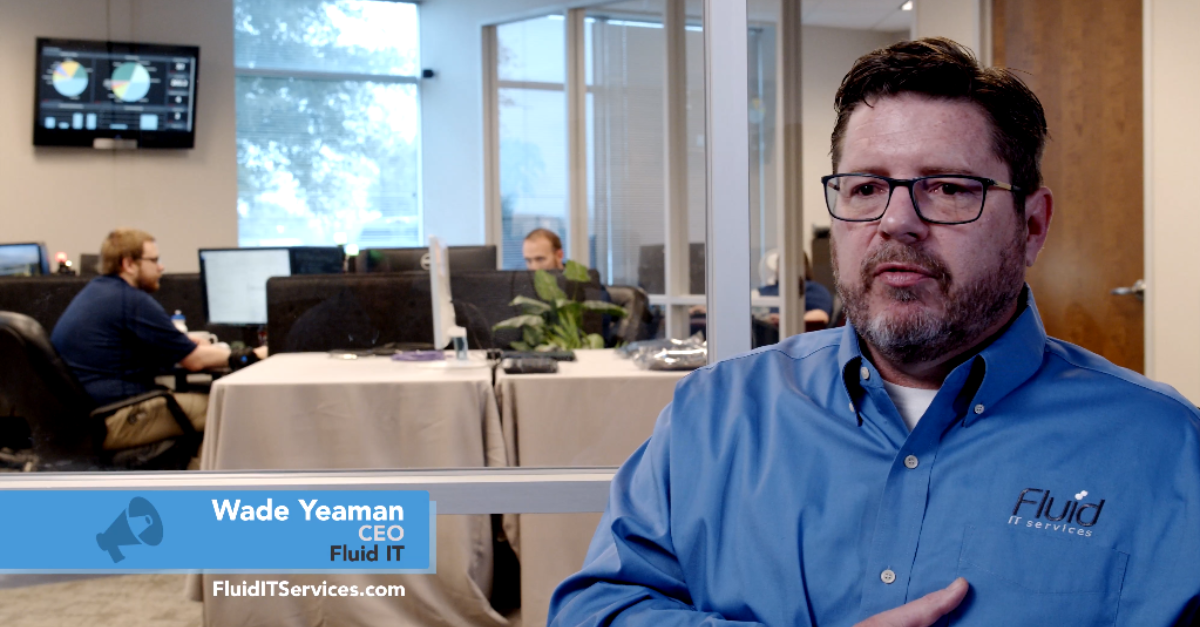The Dangers of Shadow IT: Insights from the CEO of Fluid IT
In today's fast-paced technological landscape, businesses face an overwhelming challenge of keeping up with the sheer volume of new applications and...

Anyone who has made a major purchase in their life knows the emotional rollercoaster of excitement and stress. Buying a new car is both exciting and thrilling, with anticipation of traveling in that new car smell with all the latest gadgets. At the same time, it is an exhausting and anxiety-filled journey when considering all the brands, all the features, and the countless trim levels. Then, there is the added financial burden and dreaded ‘dealing with the sales guy’ process. It’s rare to hear of anyone completing a car-buying experience without some level of trauma. And this is for a product people know and understand.
Now imagine being a business owner, manager, or similar tasked with finding and hiring IT support for your company. For many, the experience is like standing in a fire ant bed. No one wants to be responsible for finding, vetting, and hiring a third-party company to provide IT support. I do not envy any non-technical business person tasked with the duty. Over 90 percent of IT support services buyers are non-technical.
So let’s address the first question: why are you even looking for outside IT support services? Having been in the technology-managed services business for over 20 years, there are typical symptoms that bring a business to this point.
All the above are very typical for any company in any industry in the small to mid-market, which we will define as 25 to 500 employees. For smaller than 25 (unless a startup with a rapid scale-up plan), formal IT services are too expensive. Larger than 500 companies typically hire their own in-house IT department.
Now that we have our buyer identified let’s look at the steps to be taken when evaluating an MSP.
This can be simple or complex based on the size of business, number of locations, industry, compliance needs, etc. A business in healthcare required to meet HIPAA compliance will have different requirements than a landscape company.
Typical requirements often include the following:
Once the basic requirements are defined and agreed upon, you are ready to begin the next step.
It is surprising that a majority of our clients and businesses in the small to mid-market, do not have even an informal budget for IT. It is treated as a reactive ‘cost center’ that is fed the bare minimum in funding to keep the lights on. However, this often conflicts with the owner/management goal to be current with technology, stay up and running at all times, be secure and proactive. To meet these goals requires a more proactive approach to IT, which then leads to a budget.
One of the first questions with any IT budget is what should be included. While there is no single way that is right, typical budget cost areas include the following:
It may be difficult to estimate each or any of these without experience or guidance from someone well-versed in technology operations. Costs can also vary widely depending on the business itself. Are high-end laptops required? Is expensive software required? What level/amount of cybersecurity is needed?
The most important factor in determining IT cost is the owner/management view and philosophy regarding IT. Is IT seen as a value-added operation to the business, meaning the business is more successful, makes more money, has a competitive advantage, etc., because of technology? Or is IT seen as a cost center only that has little value other than the bare minimum needed by the business. The former will demand a higher IT budget than the latter.
Once you have the requirements and budget (even if a broad range) in hand, you are ready for the next step – the search.
The IT support world has gone through tremendous change in the past five years. What was once called IT support, then IT outsourcing, fractional IT, is now generally referred to as Managed Service Provider or MSP. Mind you, these are all marketing terms. A search that may have provided a dozen results five years ago will now provide hundreds of results. The market has literally been flooded with companies wanting to get into the MSP business. Why? Because they covet the monthly recurring revenue. Companies providing tangential services in the past now have jumped into the MSP pool. These include copier companies, phone/voice companies, cabling companies, audio/visual companies, and even anything remotely associated with technology.
The very real issue created by this flood is not only saturating the market, but it confuses the business buyer looking for services. When everyone is saying the same thing in the same way on their website, how do you tell good from bad? How can you properly assess providers on an ‘apples to apples’ basis? Ironically, it is almost impossible to do without the assistance of someone experienced in the MSP business itself, providing advisory level guidance regardless of who the ‘winner’ is at the end.
While I do not discourage researching online for MSPs, I always recommend soliciting recommendations from trusted colleagues who use IT services, whether they are customers, clients, trusted business relationships, etc. Having feedback from someone with direct experience is always a good thing.
I have always been in this business with the primary desire and goal to help people, so when anyone comes to me, whether they are a fit for Fluid or not, I offer to assist in their search because it is such a complicated process tied to a critically important business decision.
The reality in the MSP market is that a vast majority are extremely small with limited skills and experience. That is not to say they are all bad. I often get asked how many employees we have and I say “I can answer the wrong question with 100% accuracy, or answer the better question with 80% accuracy”. The number of employees does not dictate the level and quality of service, but it can and does matter at scale. It is far more important to have the right number of resources with the right skillset to handle needs at peak demand, ideally without resorting to outsourced resources. In the MSP world, technical resources are often placed into ‘buckets’. Level 1, 2, 3 and 4, with level 1 being the basic helpdesk troubleshooter to level 4 being the senior solutions engineer and architect. It makes sense logically that the staffing model for an MSP should be like a pyramid, with more level 1’s than level 4’s because the demand is higher on a regular basis for helpdesk troubleshooting than for senior engineers. The challenge is how to forecast the demand to ensure staffing levels are appropriate to meet the demand whenever it comes.
Many MSPs are started by very talented technical people who are 100% hands-on and do all the work, from the most mundane to the most critical and advanced. They wake up one day with a book of business and a couple of technicians helping carry the load. They often run a lot of expenses through the business and have low overhead (no office, no marketing, no dedicated sales, no dedicated accounting, etc.). This also allows them to run on very low margins, say 10 to 20%, which may be fine in a high-volume business but is not sustainable in a service business. The end result is the ability to charge lower prices for a lower level of service. There is also a higher risk the provider will not be able to meet the ongoing demands of clients at scale or remain in business.
Once you have narrowed your search to two to three providers, you should take the following steps:
Note that most MSP agreements are twelve or thirty-six months. Often times this is the case due to elements that must be put in place with other third-parties that also have the same terms, such as Microsoft or other vendor solutions.
Finding and hiring an MSP provider is much like finding and hiring a key employee. You not only want and need them to provide quality services that meet or exceed your expectations on a consistent basis, you also want to ensure they are a good cultural and relationship fit. Every MSP has a personality based on their ethics and culture. It is important that you trust and have a good feeling about the relationship because it is best for both parties to go into the arrangement as a long-term partnership and not an arms-length vendor agreement.
A good MSP will take the same approach and use the vetting process to interview you as a potential client. Not all businesses are a good fit for MSPs, and the good ones should properly assess the potential partnership based on a good long-term relationship. Great clients are a joy to work with and result in less stress on your and their employees. Clients that are not a good fit create unnecessary stress on the employees, which naturally results in lower quality of service and client end-user satisfaction.
The main takeaway is that it is in both the buyer's and MSP's best interest and equally important to ensure a good cultural and personality fit beyond just the numbers.
As always, we are here to help in your search for technology services.

In today's fast-paced technological landscape, businesses face an overwhelming challenge of keeping up with the sheer volume of new applications and...

The Need for Constant Communication How do business leaders make decisions regarding IT? Do they have a formal process, or is it informal word of...

Cybersecurity is no longer just a concern for large corporations. Small and mid-sized businesses across Dallas and Fort Worth are increasingly...